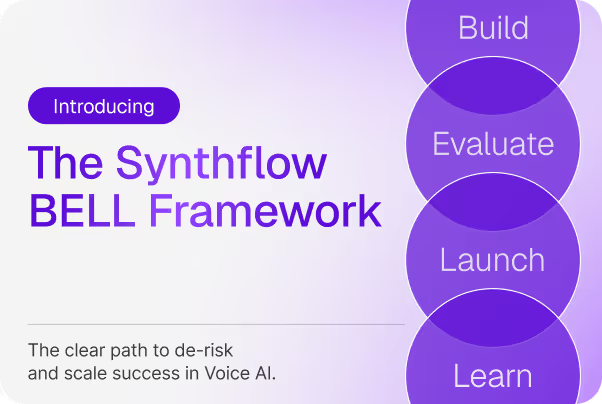Software
Conversational AI for E-Commerce: Use Cases & Benefits

Table of Contents

Online shopping has changed over the years, but customers continue to expect more from brands they interact with.
Customers are shifting from a "do it with me" perspective to a "do it for me" experience, and AI is a critical enabler in how we provide those experiences whenever and wherever they need us.
For instance, Walmart has enabled a conversational AI chatbot that allows customers to add items to their cart and receive personalized recommendations through voice commands. As a result, 40% of more users purchased interaction. These customers spend 2.5 times more money than those who didn't engage with the chatbot.

Conversational AI in e-commerce uses smart chatbots and voice assistants to provide instant human interactions. These tools help improve customer engagement, drive better business results, and streamline processes.
In this blog, we'll explore what conversational AI is in e-commerce, its use cases, and choosing the right tool for implementation.
What is conversational AI in E-Commerce?
The generative AI in the e-commerce market is forecasted to grow 3,519.84 million by 2034 from USD 833.11 million in 2024, of which conversational AI plays a major subset.

While it's clear that the adoption of conversational AI in the realm of e-commerce presents a significant breakthrough opportunity, many companies are posting a crucial question: how can we make conversational AI more approachable and digestible for our organization?
Conversational AI uses machine learning and NLP to mimic human conversations, helping e-commerce brands automate customer interactions. Instead of navigating a complex website, customers can simply ask the conversational AI tool for assistance using chatbots and voice assistants.
Imagine this: an online element that can answer you, engage with you, and even help you like a human rep.
You probably know AI chatbots exist. These AI assistants are emerging for everyone–not just on e-commerce and online retailers but also on popular social media platforms.

Why? Delivering hyper-personalized interactions.
Mckinsey says that 71% of consumers expect companies to deliver personalized interactions, and 76% get frustrated when they don't receive it. Ratcheting up the pressure on companies, if consumers don't like the experience they receive, it's easier for them to choose something different.

In fact, customers would like to see conversational AI inserted into different stages of the shopping experience.

Think of the last time you had a question shopping online. How convenient would it be if you got an instant, helpful response? That's exactly what conversational AI aims to provide–a smoother and intuitive shopping experience.
Technology Behind Conversational AI
Conversational Artificial Intelligence (AI) refers to chatbots and virtual agents that users can talk to. This technology combines Natural Language Processing (NLP) with machine learning to help imitate human interactions.
Let’s understand these terms better:
- Machine Learning: It’s a subset field of artificial intelligence made up of a set of algorithms, features, and data sets that continuously improve themselves with experience. As the input grows, the AI platform machine gets better at recognizing patterns and uses it to make predictions.
- Natural Language Processing: This is a method of analyzing with the help of machine learning algorithms. Through NLP, they can understand the context, sentiment, and intent behind user messages. This enables them to engage in conversations that feel natural as if they’re interacting with a human.
The mechanism behind conversational AI is something called Reinforcement Learning, where the bot does not need a script to respond. Unlike traditional chatbots that need pre-written templates by humans, conversational AI voice bots progressively learn from past interactions to improve their response and better understand user intent.
For instance, Synthflow uses advanced NLP and machine learning algorithms to deliver human-like, engaging conversations. Their extensive voice library allows clients to perfectly match voiceovers to the specific needs of the audience, adapting seamlessly to global and local markets. With the growing need for real-time support, customer service automation enables e-commerce brands to handle high volumes of inquiries efficiently, ensuring customers receive instant responses without delays.
Synthflow AI offers integration capability to some of the most powerful integration capabilities, including Hubspot, Zapier, ClickFunnels, Cal.com, Make.com, and more. You can seamlessly integrate your current tech stack with Synthflow AI hassle-free.
Key use cases of conversational AI in E-commerce
Conversational AI has the potential to streamline and automate several steps in your e-commerce selling process, leading to faster resolution, reduced cost, and high accuracy. Here are some of the use cases in which conversational AI impacts e-commerce-
- Product Discovery and Recommendations
Customers usually leave online stores because they can't find the right product or it takes them an enormous amount of time to search for it. Guided shopping with conversational AI aims to replicate the in-store consultative experience for online buyers.
You can reimagine product search with AI by using:
- NLP for semantic search: Natural Language Processing (NLP) algorithms can quickly grasp the context, intent, and sentiment behind search queries, allowing for more accurate and contextually relevant results.
- Image recognition for visual search: Image recognition has truly revolutionized the way customers search for products. AI-powered image recognition allows users to search for products by uploading images or taking photos.
- Machine learning for search result ranking: Machine learning algorithms analyze customer data, including purchase history, browsing behaviour, purchase history and interactions, to learn individual preferences and tailor search results accordingly.
A global clothing brand, H&M understands the pulse of its shoppers by constantly using NLP and machine learning algorithms to understand their preferences. Its AI chatbot, Kik, acts as a personal stylist for customers by asking them a series of questions and helping them find the right outfits and styles based on their tastes.

- Fraud Detection and Prevention
Conversational AI is critical to fighting fraud. Not only does it reduce the possibility of human error, but it also quickly flags suspicious behaviour. Additionally, it provides far better insight into the cyber ecosystem at the point of predictive detection, which helps in threat decision-making and threat hunting.
AI fraud detection features—aided by predictive analytics – can be integrated with retail processing systems and online websites. The machine learning models empower fraud detection and learn to spot patterns associated with fraud.
For instance, PayPal fraud detection tools use risk management and machine learning technology to manage risks 24/7. It evaluates over 1 billion monthly transactions and a global consumer network that gets smarter with each transaction. This enables PayPal to quickly identify customers who may be at risk of risk and act quickly to retain them.
- Omnichannel Customer Engagement
Omnichannel conversational AI is a transformative technology that combines automation, artificial intelligence and machine learning to manage and enhance customer interaction across multiple channels. Its key feature is to unify conversations across channels, ensuring customers never feel disconnected from the brand.
According to Salesforce, 66% of customers expect companies to have advanced technology to manage customer queries across various channels. For instance, a customer might initiate a support request on the company's website and continue the conversation via the mobile app.
By automating customer interactions, contact center automation ensures faster response times and seamless issue resolution. This allows businesses to efficiently manage high volumes of inquiries while maintaining a smooth and consistent support experience. With AI handling routine questions, support teams can dedicate more time to personalized assistance and strategic problem-solving.
Key Benefits of Conversational AI for E-Commerce
For e-commerce businesses looking to develop AI solutions for banking, the opportunities are endless. The e-commerce sector presents a unique landscape where conversational AI can solve critical problems such as limited personalization, long wait times and complex processes in traditional banking services.
Let's understand why an AI-driven solution for the e-commerce industry is a game changer:
- Improves Key Customer Service Processes
If sales people are hired for their soft skill sales power, why do they spend three-quarters of their time on data entry, research and content collation–instead of core selling?
Conversational AI can help the sales team get back to the heart of selling by making close client interaction a priority. Your conversational AI tool can look for market and client insights, handle client follow-up activities, craft personalized sales documents and craft personalized sales documents–all at a lightning fast speed.
None of this is meant to replace human agents–it simply supports them by eliminating mundane tasks. When your AI recognizes the need for human intervention, it can route the call to your team with full context regarding the problem.
- Powers up personalization
A recent McKinsey study shows the majority of consumers (71%) expect the businesses they buy from to recognize them as individuals and know their interests.

From supporting customers with product queries to offering personalized suggestions, AI agents help enhance personalization at every step. Among shoppers who are aware of the use of conversational AI, they have already used it. In fact,66% of consumers are open to purchasing new products or services recommended by conversational AI, and nearly 55% of GenZ consumers have already bought them. To deliver such personalized recommendations effectively, businesses use tools like Google search API to access real-time market data and search trends that help AI understand current consumer demand.
Owing to its popularity, Sephora, one of the biggest e-commerce brands, leans on AI and NLP to understand what its customers are looking for and continue to learn more about them. Customers can connect with beauty experts at any time to browse products, make reservations in-store and even find the right shade of makeup.

- Faster Issue Resolution and Reduced Wait Times
Unlike human agents, which may take some time to answer queries, conversational AI bot provides 24/7 customer support. Whether it's checking an order status or troubleshooting issues, AI solves customer enquiries quickly.
This eliminates longer wait times and ensures customers remain satisfied and loyal to the brand. Conversational AI also reduces the need to hire large customer support teams by automating repetitive enquiries and supporting customers to reach through their preferred platforms: chat, voice, or social media.
Choosing the right conversational AI platform for E-commerce
Implementing conversational AI tools in the e-commerce sector requires selecting the right platform that meets the unique needs of e-commerce companies. Here are some of the critical factors to consider when choosing the right conversational platform:
Why choose Synthflow AI?
Synthflow's no-code, drag-and-drop interface allows users to set up a voice agent in minutes without needing any technical knowledge or coding ability. It can seamlessly handle a large volume of calls across all timelines and languages.
Features:
- Zero latency
- Text-to-speech and advanced transcription features
- 11labs integration – clone voices and automatically schedule appointments into your calendar
- Robust customer support
- Advanced call sorting, logging, and transferring
- Generate responses and action them live in call
- Resell Synthflow – fully white-labelled version available
- CRM Integrations – High Level, HubSpot
Synthflow's features are highly advanced, and its use cases are well-suited for any ecommerce business looking to automate aspects of its sales and marketing seamlessly.
Want to try a free demo to see how you can replace your traditional call centres with AI voice bots? Sign up here.



.avif)